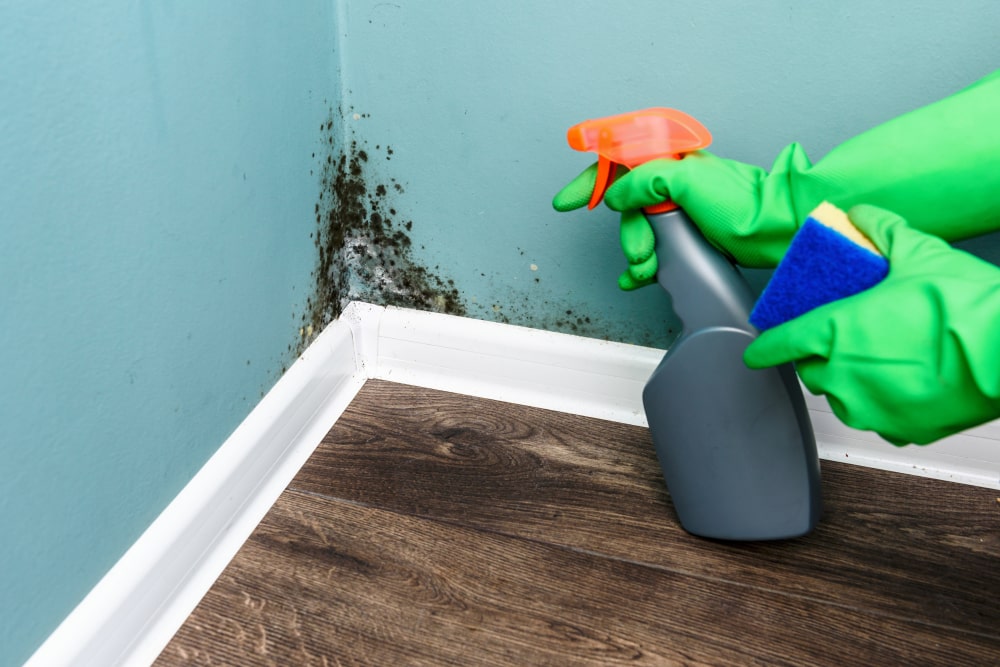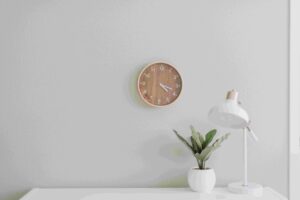7 Easy, Natural Ways to Get Rid of Fungus and Mould from Your Home this Monsoon
In the monsoon, our homes become breeding grounds for fungus and bacteria which turn indoor environments unhealthy. Here's how to fight fungus.

Even while the monsoon brings respite from the heat and turns everything in its path a lush, lively green, increased humidity brings mould which can damage your walls, furniture and clothes. If you live in a coastal city like Mumbai which faces incessant monsoon rains, it is common for walls, clothes, food and utensils to remain damp and become breeding grounds for mould. Mould and fungus can grow anywhere – in furniture, upholstery, clothing and in leaky pipes, cracks in walls and ceilings. It is not just unpleasant to look at, it also harbours bugs and insects.
Mould spores are known to cause and aggravate allergies and respiratory conditions like asthma. The musty air and stale odour also affect the quality of indoor environments, especially in poorly-ventilated spaces.
Mould damage is difficult and expensive to correct, so it best to take preventive steps before the monsoon sets in. But sometimes, no matter how cautious you are, it is inevitable that a few articles or areas of your home will attract mould in the monsoon.
Here’s how you can tackle it naturally without reaching out for bleach, harsh acids or expensive disinfectants.
Pre-Monsoon Care
Before the monsoon sets in, go on a decluttering drive. With the increased humidity in the air, any article becomes a potential host for mould. Rid your home of all unwanted and unused items especially those made of bio-based materials. This includes books, clothes, furniture, furnishings, shoes and decor items that are exposed to moisture.
Improve the airflow in your home by ensuring cross ventilation. Keep windows open whenever possible to let fresh air in. Avoid keeping furniture close together or next to walls and cupboards. Keep the doors of wardrobes and cabinets open to let air in.
Moisture build-up is highest in the kitchen and bathroom. Install an exhaust fan in these areas to direct steam and cooking fumes outside. Make sure to keep windows open when cooking, washing dishes or mopping the floor. After a bath, dry the bathroom floor immediately to prevent mould from damaging bathroom tiles and fittings. Keep the bathroom door open after bathing or cleaning to allow floors and walls to dry. Avoid the use of shower curtains and thick mats in the bathroom during the monsoon as they retain moisture and develop mildew.
Use waterproof paint to protect any indoor walls or ceilings especially prone to water damage, blistering and peeling.
Tackle the wet areas in your home: Identify spots that are prone to water stagnation. Repair any leaky pipes and AC vents; check under sinks, around drains and low-lying spaces such as basement to identify cracks and prevent seepage and flooding.
Protect foodgrains by sun-drying them on a balcony or terrace before storing them away in airtight containers. Keep your spices lasting longer by dry roasting and sun-drying them before the rains set in, then storing them in airtight containers. Preserve lesser-used spices by keeping them in the fridge.
Care during the monsoon
Don’t leave any wet items lying around: Whether it is damp clothes, towels, mops, shoes or bags, mould loves moisture. Make sure to dry out clothes well before putting them into the washing machine or laundry basket. Avoid storing wet shoes in closed cupboards. It is best to air out damp items under the fan before storing them away.
Clothing, especially less-used items, are prone to fungus attacks in the rainy season. Clothes that you carefully iron, fold and store away become magnets for fungus. In the rainy season, never store clothes when they are damp. Protect your wardrobe with dehumidifiers such as silica gels, activated charcoal and other moisture absorbers that can keep humidity from building up.
Avoid washing too many clothes at once if you have to dry your laundry indoors. Space out the washed items and dry them in a well-ventilated space. Avoid washing curtains, bed linen, blankets and thick towels in the monsoon, opting instead to have them dry cleaned. Soak clothes in a mild disinfectant before putting them in the washing machine.
The key is to prevent as much moisture as possible from building up. Cover dishes while cooking to prevent steam from escaping, don’t overwater or mist indoor plants, and avoid letting water stand in buckets or accumulate in the dishes in your sink.
Store food in airtight containers as much as possible. Keep packets of grain, flour and pulses in the freezer or fridge for a day or two after purchase to prevent bacterial growth. Foodgrains stored in plastic develop mould faster than if they are stored in glass or stainless steel containers.
How to get rid of mould and fungus naturally
Sunlight
Sunny days are rare in the monsoon. But sunlight is a natural disinfectant, so make the most of the days when the sun’s out by drying out damp linens, laundry, mattresses, books and shoes in a sunny spot, opening up windows and sun-drying damp foodgrains.
Vinegar
It is said that distilled white vinegar can kill 82 per cent of mould species. Simply pour the vinegar into a spray bottle and spray it directly on the mouldy surface. Let it sit for an hour until the vinegar is absorbed by the mould. Then scrub off with a brush and hot water. Clean the area with hot water and wipe dry.
For clothes: Soak mouldy clothes in a bucket of hot water to which a cup of white vinegar has been added. You can also add vinegar into your washing machine to get rid of the musty smell from clothes and linens.
For leather: First, swab off all the mildew from the leather goods. Next, wipe it clean with a rag soaked in vinegar. Let it air dry.
Baking soda
You can also use vinegar in combination with baking soda to improve its effectiveness. Sprinkle baking soda onto a mouldy patch or spray a solution of 1 teaspoon of baking soda and 2 cups of hot water directly on the mould. Let it sit for an hour before scrubbing with a brush and rinsing off the residue. Give the area final spray of vinegar to disinfect it and prevent regrowth. Wipe dry.
Neem
Its anti-fungal properties make neem great for keeping mould and fungus away. It is also an effective way to prevent your garments from mites and silverfish infestation and get rid of stale odours without fear of discolouration. Before the rains set in, dry about 10-15 bunches of neem leaves in the shade. Shade-drying preserves the essential oils in the leaves and boosts their effectiveness. Make your own anti-fungal pouches by wrapping a few neem leaves in a cloth and placing them in your wardrobe and bookshelves. You can place them in between stacks of clothes or in the pockets of jackets, shirts and trousers on hangers.
Lemon
The 5% acid in lemon juice makes it a mild natural bleaching agent and mould cleaner. It is an effective mould repellent for a number of surfaces – from bathroom tiles to clothes. To clean mouldy tiles and floors, first, wash the area with hot water. Rinse and apply the lemon juice directly to the mould before scrubbing with a scouring pad or brush. Its fresh scent makes it effective on musty-smelling laundry, too. Soak your clothes in warm water with 1/2 a cup of lemon juice before washing. You can also add ½ cup of juice to a load of laundry and wash with your regular detergent.
Lemon also removes mildew stains on clothes, but it must be applied with caution since it has a bleaching action and can cause colours to fade. It is thus best used on white garments or on clothes with fast colours. Rub the juice of a lemon on the affected spots. Let it sit for half an hour before rinsing. Alternatively, soak a piece of cloth in lemon juice and place it on the stain. Allow it to soak for half an hour. remove the cloth and sprinkle salt to intensify the effect of the lemon. Wash the item and dry as usual.
A solution of lemon juice, baking soda and vinegar can be used to clean mouldy appliances such as ovens, blenders and coffee machines.
Camphor
Camphor works as a natural pest repellent and non-toxic alternative to naphthalene balls. As in the case of neem, make pouches containing a few camphor tablets and some cloves. Place the pouches in your wardrobe, shoe rack or bookshelf to protect them and give them a pleasant odour. Camphor fumes are also known to form a rust-preventative coating, making it effective to prevent damage to tools and other metalware.
Light
Fungus and mildew thrive in dark, moist, poorly ventilated areas. Up the light that your rooms receive by replacing thick and dark curtains with lighter materials and colours. You can also combat the shortage of natural light in the monsoon by installing a bulb in dark, damp spaces such as bathrooms, wardrobes, laundry areas and kitchens. Keep it switched on for a few hours daily during the rains. The heat and light generated by the bulb can cut the moisture in these areas and prevent fungus from taking hold.
If you found our stories insightful, informative, or even just enjoyable, we invite you to consider making a voluntary payment to support the work we do at The Better India. Your contribution helps us continue producing quality content that educates, inspires, and drives positive change.
Choose one of the payment options below for your contribution-
By paying for the stories you value, you directly contribute to sustaining our efforts focused on making a difference in the world. Together, let's ensure that impactful stories continue to be told and shared, enriching lives and communities alike.
Thank you for your support. Here are some frequently asked questions you might find helpful to know why you are contributing?


This story made me
-
97
-
121
-
89
-
167















